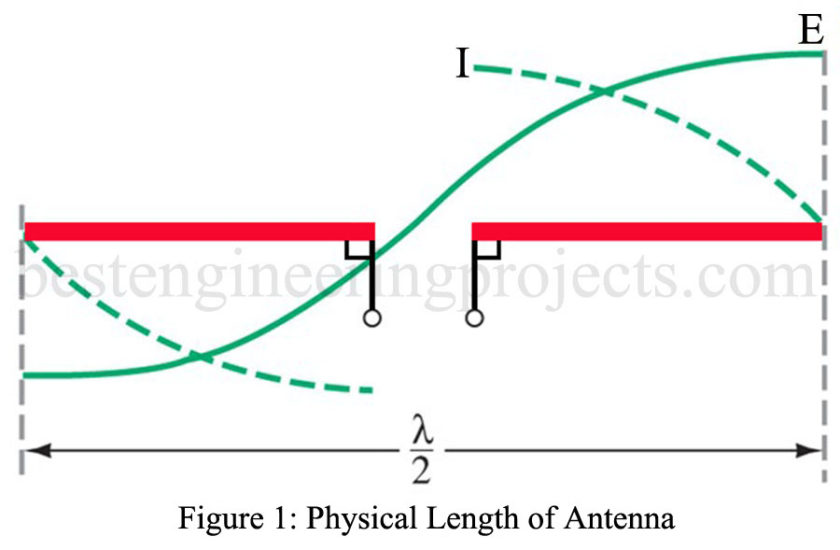What is the physical length of antenna?
If an antenna is constructed of very thin wire and is isolated in space, its electrical length corresponds closely to its physical length of antenna. In practice, however, an antenna is never isolated completely from surrounding objects. For example, the antenna will be supported by insulators with a dielectric constant greater than 1. The dielectric constant of air is arbitrarily assigned a numerical value equal to 1.
Therefore, the velocity of a wave along a conductor is always slightly less than the velocity of the same wave in free space, and the physical length of the antenna is less (by about 5%) than the corresponding wavelength in space. The physical length can be approximated as about 95% of the calculated electrical length.
EXAMPLE 1: It is desired to build a dipole to receive a 100-MHz broadcast. Determine the optimum length of the dipole.
SOLUTION
At 100 MHz,
Therefore, its electrical length is , or 1.5 m. Applying the 95% correction factor, the actual optimum physical length of antenna is 0.95 x 1.5 m = 1.43 m.
What are the effects of nonideal length?
The 95% correction factor is an approximation. If ideal results are desired, a trial-and-error procedure is used to find the exact length for optimum antenna performance. If the antenna length is not the optimum value, its input impedance will look like a capacitive circuit or an inductive circuit depending on whether the antenna is shorter or longer than the specified wavelength. A Hertz antenna slightly longer than a half wavelength will act as an inductive circuit, and an antenna slightly shorter than a half wavelength will appear to the source as a capacitive circuit. Compensation for additional length can be made by cutting the antenna down to proper length or by tuning out the inductive reactance by adding capacitance in series. This added XC will completely cancel the inductive reactance, and the source will then see a pure resistance, provided the proper size capacitor is used. If an antenna is shorter than the required length, the source end of the line will appear capacitive. This condition may be corrected by adding inductance in series with the antenna input.
